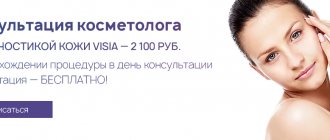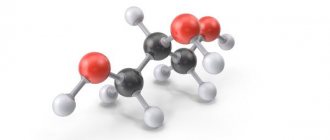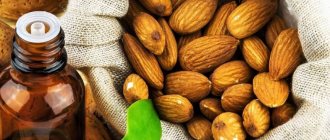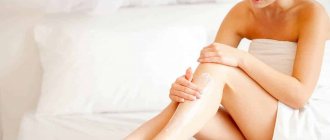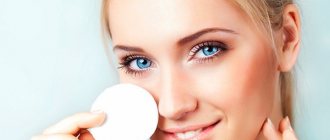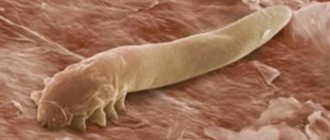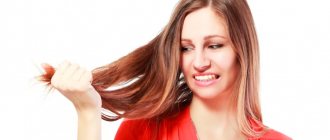From this article you will learn:
- the most effective retinoids for acne,
- list of drugs,
- retinoids for the face against wrinkles.
The article was written by a specialist with higher medical education.
Retinoids are a class of chemical compounds that are structural analogues of vitamin A, exhibiting similar biological activity to it. This is exactly the definition of retinoids given by Dr. Michael Sporn and his colleagues in 1976, when scientists knew only a few naturally occurring retinoids. At the moment this definition is outdated, because a large number of synthetic molecules are now known that are not structurally similar to vitamin A, but at the same time have a retinoid-like effect.
At the moment, retinoids are any chemical compounds of natural or artificial origin that are capable, independently or through metabolic transformation, of binding to retinoid receptors and activating them. We are talking about retinoic acid receptors (RAR) and retinoid X receptors (RXR). The first retinoid to be marketed was trans-retinoic acid, also called tretinoin. And the first commercial preparation for external use based on tretinoin is the drug “Retin-A”.
Classification of retinoids:
- The first generation of retinoids are tretinoin (trans-retinoic acid), isotretinoin (13-cis-retinoic acid), alitretinoin (9-cis-retinoic acid). This also includes retinol and retinal, which are synthetic structural analogues of vitamin A. In addition to alitretinoin, which is an antitumor drug, other retinoids are used to treat acne, as well as to increase skin elasticity, reduce fine lines and wrinkles.
- The second generation of retinoids includes etretinate, as well as its metabolite, acitretin. They are of little interest to us, because... are used only for severe forms of psoriasis (in some countries etretinate is prohibited due to its teratogenic effect).
- Third generation of retinoids - includes adapalene, tazarotene and bexarotene. These are synthetic retinoids, which in their structure are not at all similar to vitamin A, but have a retinoid-like effect. We are primarily interested in adapalene, which is an extremely effective remedy for the treatment of acne (blackheads and pimples). Tazarotene is used to treat acne and psoriasis, but drugs containing it are not registered in Russia, and bexarotene is an antitumor drug.
Clinically significant retinoids for us are:
- adapalene,
- trans-retinoic acid (Tretinoin),
- 13-cis-retinoic acid (Isotretinoin),
- retinal (retinaldehyde),
- pure retinol.
Retinoids for acne are adapalene, tretinoin and isotretinoin.
The first two are topical retinoids (i.e., intended exclusively for external use). An example of a systemic retinoid is isotretinoin, which is given orally for severe acne or pimples. But as for facial skin rejuvenation, in this case the most effective forms of retinoids will be pure retinol, retinaldehyde, and tretinoin. We did not include here the so-called retinol esters (for example, retinol acetate or retinyl palmitate), which are usually included in “economy class” anti-wrinkle cosmetics. Retinol esters are the weakest and most ineffective of all retinoids. Very often, on the packaging of an anti-wrinkle product, it is highlighted in large font, although the composition written in small font may no longer contain retinol, but only one of the retinol esters. And this is a huge difference (like a Mercedes and a Zaporozhets).
Important: however, the retinoids listed in this section can be used not only for acne or for facial skin rejuvenation. Retinoids can be effective for both correcting recent stretch marks and treating skin pigmentation disorders (such as melasma). In the next two sections we will tell you - 1) what retinoids we will use for acne, 2) the best retinoids for facial wrinkles.
How to take vitamin A tablets: recommendations and dosages
The dosage of the drug is selected individually according to the age, gender and health status of the patient. Retinol tablets are used strictly according to the instructions, since an overdose can lead to unpleasant consequences. The norm of vitamin A in accordance with age characteristics will be distributed as follows:
| Age | Drug dosage, mg |
| From 4 to 8 years | 0,9 |
| From 9 to 13 years | 1,7 |
| From 14 to 18 years old | 2,8 |
| From 19 years old | 3 |
To obtain an effective result, it is recommended to use vitamin A in tablets while eating fatty foods. The drug is drunk after meals. Most often, the course of treatment lasts 30 days. It must be repeated after 2 months.
Retinoids for acne and acne -
Retinoids are the basis of modern acne therapy (pimples and pimples). They affect almost all links of pathogenesis, which lead to the formation of inflammatory and non-inflammatory elements of acne - such as comedones, pimples (in the form of papules or pustules), or nodules.
The main therapeutic effects of retinoids:
- decreased activity of the sebaceous glands,
- elimination of follicular hyperkeratosis of the epithelium of hair follicles,
- comedolytic action,
- anti-inflammatory effect,
- exfoliating effect (reduces the cohesion of cells of the stratum corneum of the epidermis, promoting their desquamation).
For mild to moderate acne, topical retinoids are prescribed (external agents in the form of a gel or cream containing adapalene or tretinoin). However, in severe cases, the patient is usually prescribed systemic retinoids based on isotretinoin (the drugs Acnecutane and Roaccutane).
Using retinoids: before and after photos
1st and 2nd choice topical retinoids –
Tretinoin was a topical retinoid that was approved for the treatment of acne (pimples and pimples). However, now, in all international acne treatment protocols, not tretinoin is recommended as the first line of therapy, but the retinoid adapalene 0.1%. Firstly, this is due to the fact that patients with adapalene develop side effects much less frequently (for example, dryness and flaking of the skin, redness, itching, burning, feeling of tightness, etc.).
Secondly, there are clinical studies on the comparative effectiveness of tretinoin and adapalene in the treatment of acne. These studies showed that preparations with 0.1% adapalene were more or equal to the effectiveness of tretinoin preparations 0.025%. This is also stated in the most authoritative textbook on dermatology, Fitzpatrick's Dermatology, which is a reference book for most dermatologists around the world.
Preparations with tretinoin can be used to treat acne - only as a 2nd line of therapy, namely in the absence of effect from external agents with adapalene. The fact is that in an extremely small number of patients adapalene may not give the expected effect (24stoma.ru). We have already said above that 0.1% adapalene and 0.025% tretinoin are generally similar in effectiveness, however, it must be admitted that the comedolytic and anti-inflammatory effects of tretinoin are somewhat more pronounced.
The comedolytic effect is that the retinoid will help dissolve the fatty substrate of acne (comedones), which are formed during acne in the lumen of the hair follicles. So, in some patients the comedolytic effect of adapalene for unknown reasons may be insufficient. And in this case, the dermatologist may decide to prescribe the patient alternative retinoids, for example, tretinoin.
Topical retinoids: preparations
But a topical retinoid alone is not enough in most cases. Monotherapy with adapalene or tretinoin is indicated only for comedonal acne, i.e. for acne. In this case, the patient has only non-inflammatory elements of acne on his face - open and closed comedones (also called black and whiteheads). In this case, monotherapy will be sufficient, and most often dermatologists prescribe drugs with 0.1% adapalene - such as Differin or Klenzit (in the form of a gel or cream).
But if you have acne (in fact, acne is a colloquial expression, and correctly it is a papulopustular form of acne) - topical retinoid therapy alone is not enough. In addition, here it is necessary to clarify that pimples themselves can be either in the form of pustules with pus, or in the form of papules. This is very important because... The treatment regimen should take into account the predominant type of inflammatory elements in the patient. Depending on this, we will use combinations - 1) “adapalene + benzoyl peroxide”, 2) or “adapalene + benzoyl peroxide + antibiotic”.
Combined topical retinoids –
Especially for the treatment of acne (in the form of papules or pustules), there are combination preparations in which the topical retinoid adapalene is combined with antimicrobial components. The latter can be used as a bactericidal component such as benzoyl peroxide or the antibiotic clindamycin. Examples of combined preparations in the form of gels:
- Klenzit-S – contains 0.1% adapalene + 1% clindamycin,
- Effezel – contains 0.1% adapalene + 2.5% benzoyl peroxide.
In addition, in treatment you can use not only combination drugs, but also create a treatment regimen from a combination of several single drugs. For example, a patient is prescribed the drug “Baziron AS” with benzoyl peroxide in the morning + the drug “Differin” with the topical retinoid adapalene in the evening, etc. You can read about international protocols for the treatment of acne and pimples in the following articles (they are taken from the dermatology textbook “Fitzpatrick's Dermatology”):
→ Acne treatment protocols → Acne treatment protocols
Can I use retinol products in summer?
Under the influence of sunlight, retinol is destroyed, and the skin increases photosensitivity, which threatens hyperpigmentation. This rule applies not only in summer, but all year round. Even in winter, when using cosmetics with retinol, you will have to apply sunscreen.
Cosmetologists recommend excluding products with retinoids from your beauty diet during the active sunny season.
Products with herbal forms of retinol
Can be used in summer, but it is better to apply them at night. In general, follow manufacturers' instructions - if there are warnings about sun protection or evening use only, be sure to follow them!
We hope our article answered all your questions and dispelled concerns about the use of retinol in cosmetics. The most important thing in caring for retinol is to follow the instructions for use and start with a minimum concentration.
Retinoids for the face (for wrinkles and fine lines) –
A face cream with retinoids can increase skin elasticity, even out its tone and texture, and reduce the depth of wrinkles and fine lines. The most effective retinoid in cosmetology is trans-retinoic acid (tretinoin), and it is drugs with tretinoin that are approved by the FDA for the treatment of photoaging and chronoaging. Cosmetics with pure retinol and retinaldehyde can also be no less effective, but their concentration plays a big role here.
What effects do retinoids have on the skin?
- stimulate fibroblast proliferation,
- stimulate the activity of fibroblasts (synthesis of collagen, elastin and hyaluronic acid),
- reduce the thickness of the stratum corneum of the epidermis,
- increase the thickness of the deep layers of the epidermis,
- increase the thickness of the dermis,
- accelerate cell regeneration,
- reduce the destruction of collagen by UV radiation,
- lighten pigment spots caused by sun exposure on the skin.
Tretinoin therapy: before and after photos
The most effective retinoids in cosmetology -
We said above that tretinoin was the first topical retinoid to be approved by the FDA for the treatment of photoaging skin, age spots, and to reduce the depth of wrinkles and fine lines.
Tretinoin is available in the form of a cream or gel - with a concentration of 0.025%, 0.05% or 0.1%. There are a large number of clinical studies that show that the optimal therapeutic concentration of tretinoin for the treatment of aging skin is 0.025%. For example, here is a study (“Griffiths CE, Kang S, Ellis CN et al. Two concentrations of topical tretinoin cause similar improvement of photoaging but different degrees of irritation”). This study followed patients over 48 weeks and concluded that using a lower 0.025% tretinoin concentration had exactly the same effects as a higher 0.1% concentration. At the same time, the concentration of tretinoin 0.025% was significantly better tolerated by patients, without causing severe skin irritation.
Another interesting study (“Olsen EA, Katz HI, Levine N et al. Tretinoin emollient cream: a new therapy for photodamaged skin. J Am Acad Dermatol 1992”) shows that the use of products with tretinoin concentrations of 0.01% or lower - is meaningless. In this case, there was no difference in the condition of the skin before and after the course of treatment. Why are we dwelling on this in such detail? The fact is that this is very important for understanding the working concentrations of retinoids - including retinol, which is included in a large number of cosmetic products.
Effect of tretinoin cream (6 months of therapy) –
And then we move on to the list of drugs...
1) Tretinoin 0.025% (in the form of cream or gel) –
We have already said above that the most effective retinoid is trans-retinoic acid (tretinoin) and to achieve an effect we only need 0.25% concentration. In Russia, drugs containing tretinoin are not registered; however, they are sold illegally on many websites. For oily skin, it is better to use tretinoin in gel form, and for normal or sensitive skin, in cream form. Gel is a priori more effective, but if you apply it to dry or sensitive skin, you will get very severe irritation.
Options for drugs with tretinoin 0.025% –
- cream “Retino-A” (20 g) – from 1300 rubles,
- cream or gel “Retin-A” (20 g) – from 1000 rubles,
- gel “A-Ret Gel” (20 g) – from 800 rubles.
Important: Although tretinoin is the strongest retinoid, it is not always a good choice. Tretinoin (compared to all other retinoids) has the strongest irritant effect on the skin, and very often causes dryness, redness, peeling, itching and burning, a feeling of tightness, and in rare cases even causes hives and burns. That is why the use of tretinoin should be gradual, starting with 2 times a week, and then gradually over the course of 1 month the patient switches to daily use.
Patients with dry and/or sensitive skin will be at a particularly high risk of side effects. Nevertheless, gradually increasing the frequency of application and parallel use of skin moisturizing products allows minimizing side effects. You can read how to properly use medications with tretinoin at the link below:
→ Features of using Tretinoin
Redness and peeling of the skin due to tretinoin -
Contraindications and side effects of retinol
If we are talking about forms of retinol that are not herbal, then you should be aware of the contraindications and side effects of this component.
Contraindications:
- pregnancy,
- chronic pancreatitis,
- cholelithiasis,
- acute chronic nephritis,
- cardiac decompensation,
- hypervitaminosis A,
- cirrhosis of the liver,
- viral hepatitis,
- sensitivity of the skin.
Side effects:
- skin irritations,
- allergic reactions,
- genetic mutations of the fetus,
- burns,
- hyperpigmentation,
- thinning of the skin,
- itching,
- peeling and tightness of the skin,
- hyperemia of the skin.
Please note that the skin needs to adapt to retinol and start care with low concentrations.
